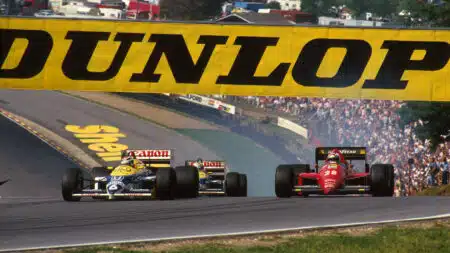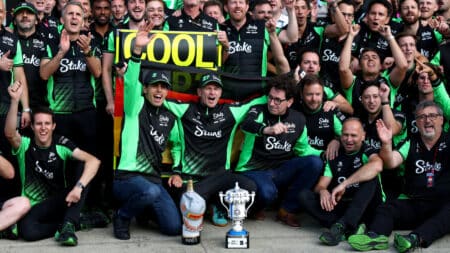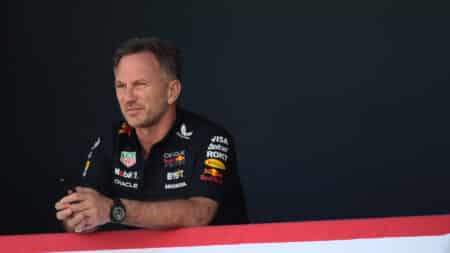
Brands Hatch: F1's beloved countryside amphitheatre
On this day in 1964, the roar of F1 engines echoed through the Kent countryside for the first time, as Brands Hatch made its debut on the world stage
The second in a five-part series of extracts from Motor Sport Grand Prix editor Mark Hughes.
While Formula 1 was safer than ever before, it was still a lethal motor sport, and this time there was no Stewart or Rindt leading the cause for safety
The combined changes [outlined in extract one] had transformed Formula 1’s safety from lethal to merely dangerous. Nelson Piquet says that in detached moments of contemplation he fully expected to die in a racing car. But he never had a visceral sense that it was imminent – and perhaps that’s the most telling distinction between eras. If 1970 had been a time of lethal beauty, 1980 was not quite as lethal, not quite so beautiful. It was now possible for an F1 driver to feel a lightness of being, to enjoy the life from day to day, to not climb into the car feeling sick with fear. It was in that spirit one summer late morning that Patrick D Depailler, just back from vacation and having recently returned to fitness after breaking his legs in a hang-gliding accident – climbed into his dayglo Alfa-Romeo at Hockenheim for a pre-German Grand Prix test session. “He was happy,” recalls his teammate Bruno Giacomelli, present at that same test. “He joked with me before he got in the car, he had his girlfriend with him and it was like they were still on holiday.” On Patrick’s first flying lap, approaching the flat-in-top Ostkurve, the Alfa’s titanium suspension failed and in little more than an instant his life was switched off.
Jones talked about the psychic impact of that incident in his book Driving Ambition: ‘If I asked myself too many questions about it, I’d just be waking up in fear myself, and I can neither afford that nor allow it to happen. Drivers sometimes joke about death and people might think we are cold bastards. Patrick bought it last week. What does that mean? He bought it. We know what it means. We seem callous, but it’s our way of glossing over the fact; it’s how we reject his death. Or our own.’
‘He didn’t think he was going to die,’ says John Watson. ‘But he didn’t realise he was almost destined to.’ Danger had been moved from centre stage to a more discrete part of the room, no longer freaking out the participants the way it had in 1970, but it was still liable to strike at any moment. Tough old Clay Regazzoni’s decade-long F1 career was brought to a violent close at Long Beach when the titanium brake pedal on his Ensign snapped at 180mph, the impact with the wall leaving him permanently paralysed from the waist down. Jean-Pierre Jabouille’s leg injuries from his Montreal crash after his Renault’s front suspension failed effectively ended his F1 career. Marc Surer suffered broken ankles after crashing his ATS during practice at Kyalami and Alain Prost broke his wrist when his McLaren’s suspension failed at the same venue, one of four mechanical failure-induced accidents suffered by the rookie during the season. As a casualty list for just 15 races it wasn’t great by 21st century standards but from inside at the time the overriding sense was that it was vastly safer than it had been.
There was no 1980 equivalent of Jackie Stewart or Jochen Rindt, taking it upon themselves to demand changes, answerable to no-one, holding the sport to account and forcing it to follow their lead. Jody Scheckter had inherited leadership of the Grand Prix Drivers Association and was making a valiant effort, but he found it impossible to command the full support of his peers for any direct action, the younger drivers, in particular, wanting no part in something that might get them pushed off the gravy train. And, hell, the safety wasn’t so bad, they reasoned.
The rise of FOCA had definitely played a part, imbuing the leading teams with a growing sense of power – even over their own drivers. When Jochen Rindt had refused to drive his Lotus 72 until Colin Chapman fixed the suspension the way he wanted it in 1970, he got his way. Ten years later when Chapman’s Grand Prix drivers were contemplating joining a GPDA strike motion at Monaco over safety concerns about the number of cars being allowed to run, he told F3 driver Nigel Mansell to be prepared to make his F1 debut. The strike never happened.
Ten years earlier Stewart had bestrode the sport at every level, moving in corporate circles, initiating meetings with the movers and shakers, leading the team’s commercial direction, linking up vital technical partnerships. The Tyrrell team had been his employer only notionally. He’d been a bigger player than any of the teams, transcending what was a minority interest sport. By 1980 the teams had expanded their horizons. F1 was well on its way to being a global sports phenomenon, dwarfing the drivers who, though not yet fully under control and retaining a certain freewheeling outlook, were nonetheless merely highly paid employees.
You can buy F1 Retro 1980 now from the Motor Sport shop

On this day in 1964, the roar of F1 engines echoed through the Kent countryside for the first time, as Brands Hatch made its debut on the world stage

Nico Hülkenberg's long-awaited first podium at Silverstone came after a virtuoso drive, but it only came about thanks to one unforgettable qualifying lap in 2020, as Mark Hughes recalls

Nico Hülkenberg's first F1 podium followed a faultless British GP drive where he went against his team with strategy calls that proved crucial in wet weather at Silverstone. Here are the radio messages that show how he pulled it off

From shock Zoom calls to ruthless midnight firings, F1’s history is littered with team principals and executives who are in command one moment and unceremoniously sacked the next